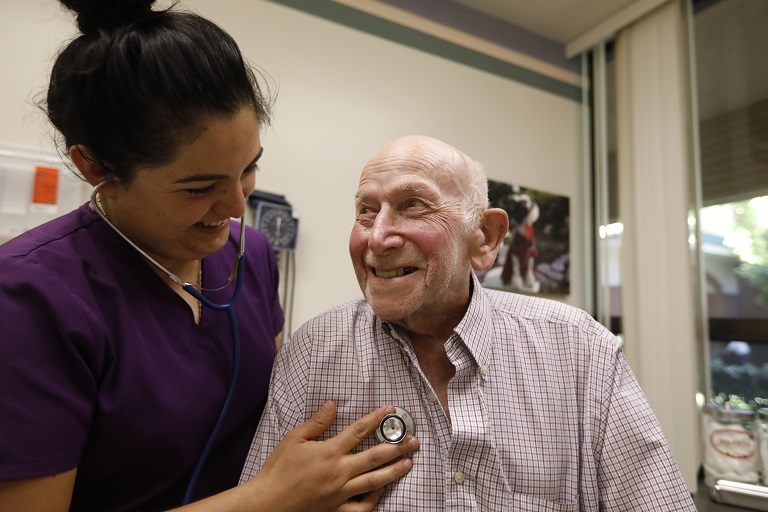Telehealth Program Halves Hospital Admissions
A recent study shows telehealth can lower healthcare costs and hospitalization rates for patients with multiple chronic conditions.
As part of the overall telehealth program at Arizona-based Banner Health, the Philips Intensive Ambulatory Care (IAC) pilot program treats patients with complex medical situations due to multiple chronic conditions. Philips is a LeadingAge Silver Partner and CAST Supporter.
The latest cost analysis reveals significant reductions in hospitalizations, readmissions and healthcare costs, and improved patient outcomes overall. The findings are significant because nationwide, patients with multiple chronic conditions are responsible for half of the overall healthcare spending.
In this updated study, aiming to evaluate the prolonged impact of the IAC program, Philips and Banner examined 1,283 patients who had at least one year pre-IAC and one year post-IAC follow up. Patient results revealed that the IAC program helped:
- Reduce overall costs of care by 34.5%, primarily by reducing hospitalization rates and days in the hospital, as well as by reducing professional service and outpatient costs.
- Reduce hospitalizations by 49.5%. Before enrolling in the IAC program, there were 10.9 hospitalizations per 100 patients per month; after enrollment, the acute and long-term hospitalization rate dropped to 5.5 hospitalizations per 100 patients per month.
- Reduce the number of days in the hospital by 50%. Prior to enrollment, the average number of days in the hospital was 60 days per 100 patients per month, compared to 30 days after enrollment.
- Reduce the 30-day readmission rate by 75%. The 30-day readmission rate went from 20% prior to enrollment to 5% after enrollment.
The one year post-IAC follow up results presented in this study provide an even more accurate picture of day-to-day patient outcomes of the IAC program. The longer patients with chronic conditions are monitored, the more difficult it is to sustain or improve outcomes due to multiple factors, including the increased chances of chronic conditions worsening and the Hawthorne effect, in which research participants alter their natural behavior in the short-term due to their awareness of being evaluated. As time passes with this psychological phenomenon, participants are gradually more likely to forget they are being evaluated and act natural, instead of trying to put forth their best behaviors.
Philips telehealth programs help address multiple cohorts within a population ranging from highest cost patients with intensive ambulatory care and acute needs, to discharge transition and chronic patient management, to prevention and wellness for the general population. These programs are designed to clinically transform the delivery of care to address growing clinician shortages while improving patient outcomes.

Most Recommended
October 15, 2025
 Shutdown Week Three: Impact of Ongoing Closure on Affordable Housing
Shutdown Week Three: Impact of Ongoing Closure on Affordable Housing
December 10, 2025
Fiscal Year (FY) Funding 2026
October 07, 2025
Immigrant Workforce Matching Program Brings Workforce Relief
Recently Added
December 19, 2025
House Moves Forward on Affordable Housing Reforms
December 19, 2025
White House Cannabis EO Paves Way for Research, Access
December 19, 2025
LeadingAge Urges DHS to Maintain "Public Charge" Guardrails
December 18, 2025



